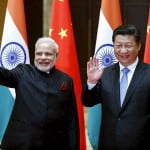
India is in the midst of a gradual recovery and expected to clock a growth of 7.6 per cent during the fiscal, but to meet its true potential, reforms, especially in land and labour will need to be bolder, says an HSBC report.
The main determinant of medium-term high and sustainable economic growth is meaningful reforms and so far they have been gradual and ‘project-specific’, the global financial services firm said.
For India to meet its true potential, reforms in land, labour and legislation will need to be bolder.
Until then, GDP growth is likely to recover more gradually at 7.6 per cent in FY16 (7.8 per cent previously), 7.8 per cent in FY17 (8.3 per cent previously) and 8.2 per cent in FY18; still among the highest in the world, added the report.
The April-June quarter GDP slipped to 7 per cent from 7.5 per cent in the preceding quarter.
The Reserve Bank on September 29 effected a more-than-expected interest rate cut of half a per cent to boost the economy. The apex bank had also lowered its economic growth forecast for the current fiscal to 7.4 per cent from its previous projection of 7.6 per cent.
HSBC expects CPI inflation to slow down to 4.8 per cent in the current financial year but is likely to rise to 5.5 per cent in the financial year 2017 on the back of low base and improving growth.
Moreover, current account deficit, is expected to narrow further to 1 per cent this fiscal taking cue from weak global commodity prices. According to HSBC, an extended El Nino effect is a risk to its forecast, as it could depress rural growth further and stoke food prices. The key risk to medium-term growth is a slackening in the reform process and the inability of public investments to crowd in the private sector, it added.
[“source-businesstoday”]





